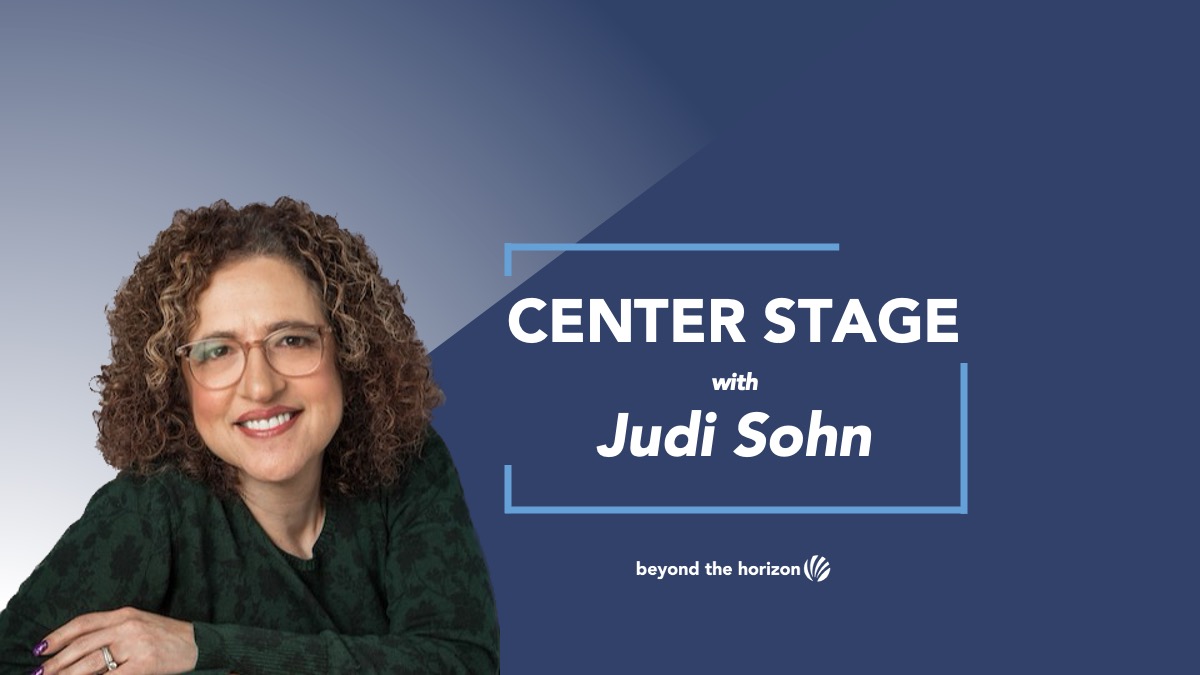
Our center stage series is a wink to our roots (one of our first clients was the nationally-recognized Undermain Theatre) where we let a member of the #bthfamily take the spotlight and share their story. This month, we are highlighting our Principal Solution Consultant, Judi Sohn. We ask her a few questions about her experience with Salesforce CRM implementations and nonprofits.
Tell us a little about yourself…
My name is Judi Sohn. I joined BTH as Principal Solution Consultant in March 2023 after spending nearly eight years at Salesforce.org in customer-centric roles around nonprofits and education. For 24 years, my career focused on nonprofit organizations and how they use technology to improve their operations and communications. Like many working in the nonprofit sector, my journey started around a personal mission. In my grief, I lost my father to colorectal cancer in 1999 and joined with others who wanted to improve outcomes for colorectal cancer patients. Together, we founded the Colorectal Cancer Alliance, and later, I co-founded what is now Fight Colorectal Cancer. At the latter organization, I implemented Salesforce in 2006, which set me on my career path. I live in Southern New Jersey, just outside Philadelphia, and I love knitting in my spare time.
What are some common pain points nonprofit staff experience day-to-day which a CRM solution could help relieve?
I’ve yet to meet a staff member at a nonprofit, no matter the size or budget, who has just one job and only one job. Quite often, the person who is entering data in the CRM is also writing content, strategizing on programs, communicating in some form with donors and other stakeholders, and so much more. The advantage of a CRM is that like the staffer; it can be flexible and do a lot more than a single task. As programs change, budgets change, stakeholders change, etc., a CRM can change as well. Too often, organizations focus on a tool that solves the immediate problem or use case and then have to find more tools to solve other issues. They have a complicated web of stand-alone tools they’re struggling to keep in sync and no “source of truth” that staff trusts. So they export to spreadsheets or look for more tools to aid integration. It never ends.
Can nonprofit organizations use Salesforce?
Yes! Back in 2006, when I was looking for a cloud-based database that our tiny organization could afford, I easily could have dismissed Salesforce at first glance. There was little back then that was called out as nonprofit-specific. It was a tool for B2B commercial organizations to help salespeople close deals. Nonprofit staff do not like to be treated as salespeople even though there are more similarities than the organization would like to admit. Nonprofits must market their services, prepare and balance budgets, and develop robust processes and workflow to get every bit of value out of every minute, just like any business. Salesforce has always excelled in this area. Over the years, Salesforce has made it easier and more accessible for a nonprofit to get started and see value faster.
How? Any examples you can share?
Because Salesforce is accessible from everywhere and so flexible, it’s ideal as the system of record for a nonprofit organization. CRM is Customer (or Constituent) RELATIONSHIP Management. It all starts with relationships. When organizations move from thinking transactionally to thinking about relationships, CRMs like Salesforce are essential. It’s not just relationships in the traditional this-person-knows-that-person sense. Or who is biologically or physically related. It’s relationships through thoughts & feelings. It’s instinct and trust.
When an organization has a system of record they trust, they’re not wasting time or donor funds, exporting data to spreadsheets to understand it. They’re getting that immediate understanding right within the CRM. They’re as confident looking at data in aggregate as they are row by row.
What are some common challenges nonprofits face when implementing a CRM platform?
They try and implement too much too quickly based on limited information. If the high-level view of their data isn’t showing _everything_ immediately, they get frustrated, and trust in the system never has a chance to take root. But worse, they may create a system based on data in conversation with a limited set of stakeholders. For example, they take input from the most vocal staff members in the fundraising department but don’t survey and interview the quieter folks who input data daily. While many of these tools are donated or discounted for nonprofits, which is excellent, they don’t consider the total cost of ownership over time. How will the solution be supported, and by whom? What documentation is going to be maintained, and by whom?
What’s your #1 piece of advice for nonprofit organizations before they start a CRM implementation project?
Value time as much, if not more, than money. An organization can always figure out a way to ask for more dollars. Time is finite. Saving time translates to more money. Saving money doesn’t create more hours in the day.
Any technology investment is more than the financial cost. Make sure you’re also budgeting for time. The most successful Salesforce projects are the ones where the organization stakeholders have invested the time to learn, document, and share. Spend time on Trailhead. Get certified. Get involved with the Salesforce community.